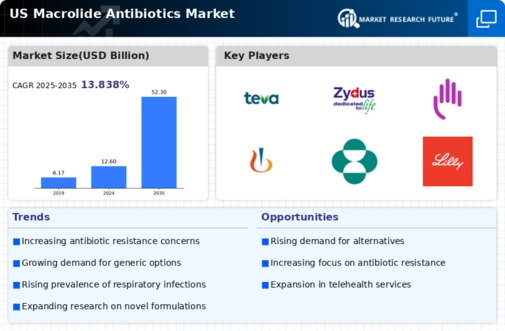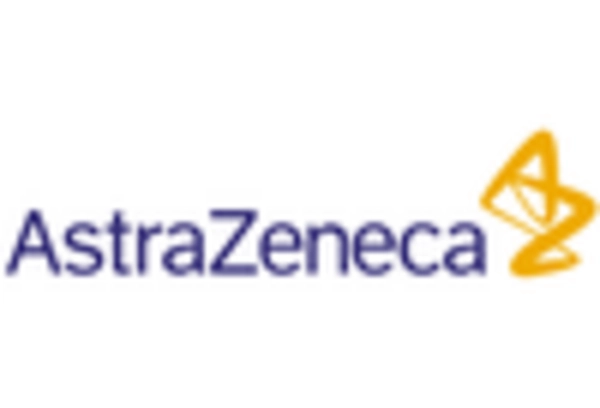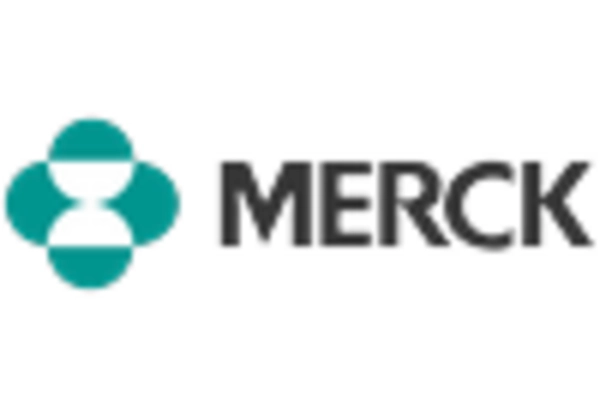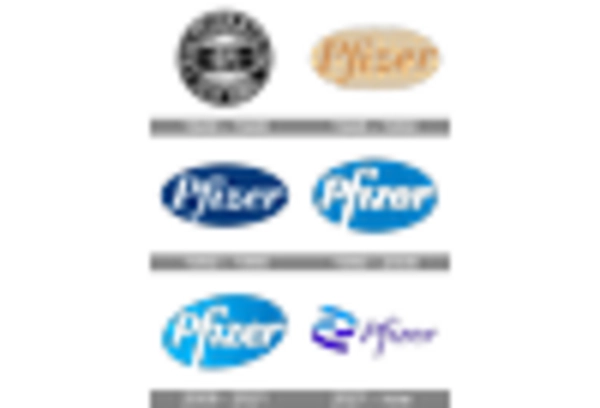Advancements in Pharmaceutical Research
the macrolide antibiotics market is driven by ongoing advancements in pharmaceutical research and development. Innovative drug formulations and delivery methods are being explored to enhance the efficacy and safety profiles of macrolide antibiotics. For instance, researchers are investigating novel combinations of macrolides with other therapeutic agents to combat resistant bacterial strains. This research is crucial, as it may lead to the introduction of new macrolide-based therapies that can address unmet medical needs. The market is likely to see an influx of new products as these research initiatives yield results, thereby expanding treatment options for healthcare providers and patients alike. The potential for new macrolide formulations could significantly impact the competitive landscape of the macrolide antibiotics market.
Regulatory Support for Antibiotic Development
the macrolide antibiotics market benefits from regulatory support aimed at facilitating the development of new antibiotics. The US Food and Drug Administration (FDA) has implemented various initiatives to expedite the approval process for novel antibiotics, including macrolides. This regulatory environment encourages pharmaceutical companies to invest in research and development, potentially leading to the introduction of innovative macrolide therapies. As the market evolves, the presence of supportive regulatory frameworks may enhance competition and drive down costs, ultimately benefiting healthcare providers and patients. The macrolide antibiotics market is likely to experience growth as new products enter the market, addressing the ongoing need for effective antibiotics in the face of rising bacterial resistance.
Increasing Prevalence of Respiratory Infections
The macrolide antibiotics market is experiencing growth due to the rising incidence of respiratory infections, such as pneumonia and bronchitis. These infections are often treated with these antibiotics. According to the Centers for Disease Control and Prevention (CDC), respiratory infections account for a significant portion of antibiotic prescriptions in the US. This trend is likely to continue, as the aging population and increased exposure to environmental pollutants contribute to higher rates of respiratory illnesses. Consequently, healthcare providers are increasingly relying on macrolide antibiotics for effective treatment, thereby driving demand in the macrolide antibiotics market. Furthermore, the market is projected to expand as awareness of these infections grows, leading to more patients seeking medical attention and appropriate antibiotic therapies.
Rising Awareness of Antibiotic Stewardship Programs
The macrolide antibiotics market is positively influenced by the growing emphasis on antibiotic stewardship programs aimed at optimizing antibiotic use. These programs, implemented by healthcare institutions across the US, focus on reducing unnecessary prescriptions and promoting the appropriate use of antibiotics, including macrolides. As healthcare providers become more educated about the benefits and risks associated with antibiotic use, they are more likely to prescribe macrolides judiciously. This trend is expected to enhance the overall effectiveness of these antibiotics, thereby increasing their utilization in treating bacterial infections. The macrolide antibiotics market stands to benefit from this shift, as responsible prescribing practices may lead to improved patient outcomes and reduced rates of antibiotic resistance.
Growing Incidence of Sexually Transmitted Infections
the macrolide antibiotics market is influenced by the increasing rates of sexually transmitted infections (STIs) in the US. Conditions such as chlamydia and gonorrhea, which are often treated with macrolide antibiotics, are on the rise, prompting healthcare providers to seek effective treatment options. The CDC reports that STIs have reached epidemic levels, necessitating the use of macrolides for their management. This trend is likely to drive demand for macrolide antibiotics, as healthcare systems strive to address the public health challenge posed by STIs. As awareness and testing for STIs improve, the macrolide antibiotics market may see a further uptick in utilization, reflecting the urgent need for effective therapeutic solutions.
















